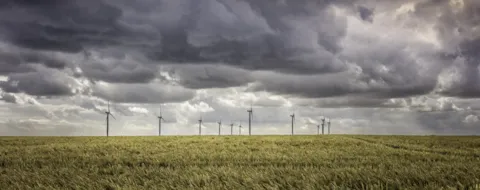Renewables boost during UK storm season
Ciara, the third storm of the season, battered the shores of the UK last weekend bringing torrential downpours and strong winds, reaching 97mph in some areas. In amongst the stories of flooding, travel disruption and power outages, there was some positive news in the renewables sector.
Saturday 8th February saw new records set in the UK for instantaneous generation, as well as daily power production. Early on Saturday morning, 56% of the UK’s electricity was being generated by wind and throughout Saturday, power generated by onshore and offshore wind farms accounted for just over 44% of total power produced.
With most of the UK still recovering from Ciara, this coming weekend will bring Storm Dennis, the fourth storm of the September – April storm season. Wind speeds are not expected to reach the levels of Storm Ciara. However, there is still expected to be a substantial boost to electricity generation from UK wind farms.
But how much is too much? High wind speed events such as these bring a risk of high wind speed shutdowns for wind turbines. This is primarily for safety reasons, as well as to protect internal components within the turbines from damage. High wind speed shutdowns can cause instability on the grid as a sudden power deficit emerges, as well as being somewhat of a lost opportunity given the available wind resource.
Currently, it is a major challenge within our industry to accurately predict shutdown events. At DNV, we are constantly striving to improve our forecasting accuracy, and high intensity storms, such as Ciara and Dennis, present us with exciting opportunities to refine our models using data from these extreme events.
With the UK government’s aim to bring offshore wind capacity to 40 GW by 2030, improvements in forecasting accuracy will be a key factor in getting the most out of our renewable infrastructure.
Want to understand how the energy transition is shifting up the agenda and the role that wind generated power will take up to 2050? Download our 2019 Energy Transition Outlook.
2/14/2020 5:00:00 AM
